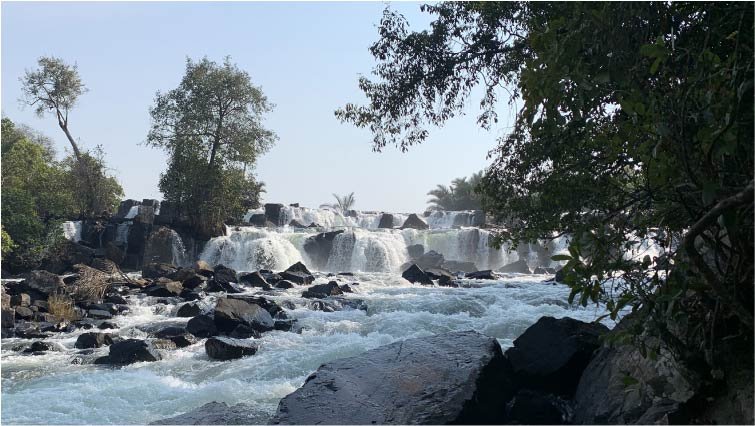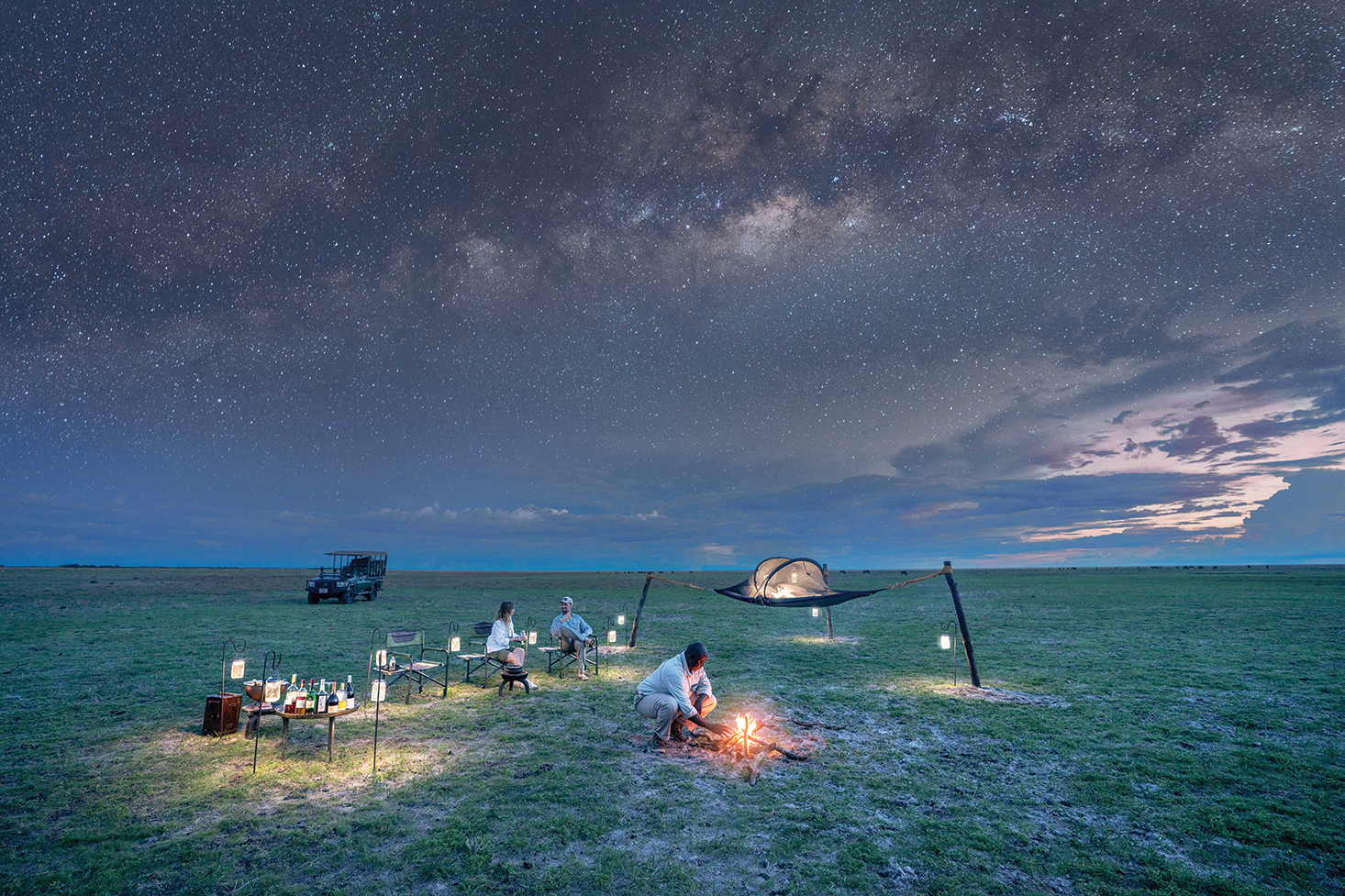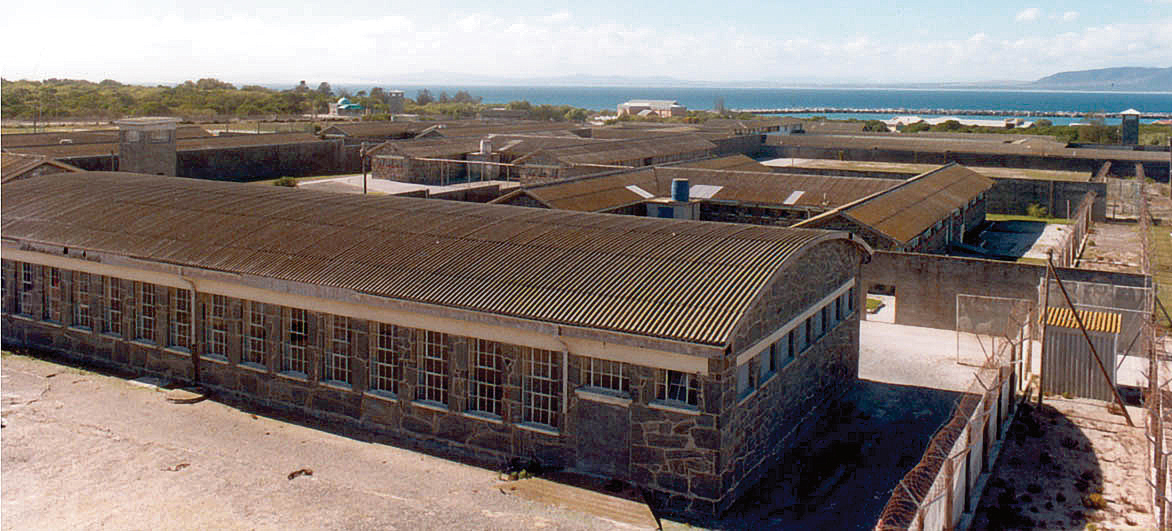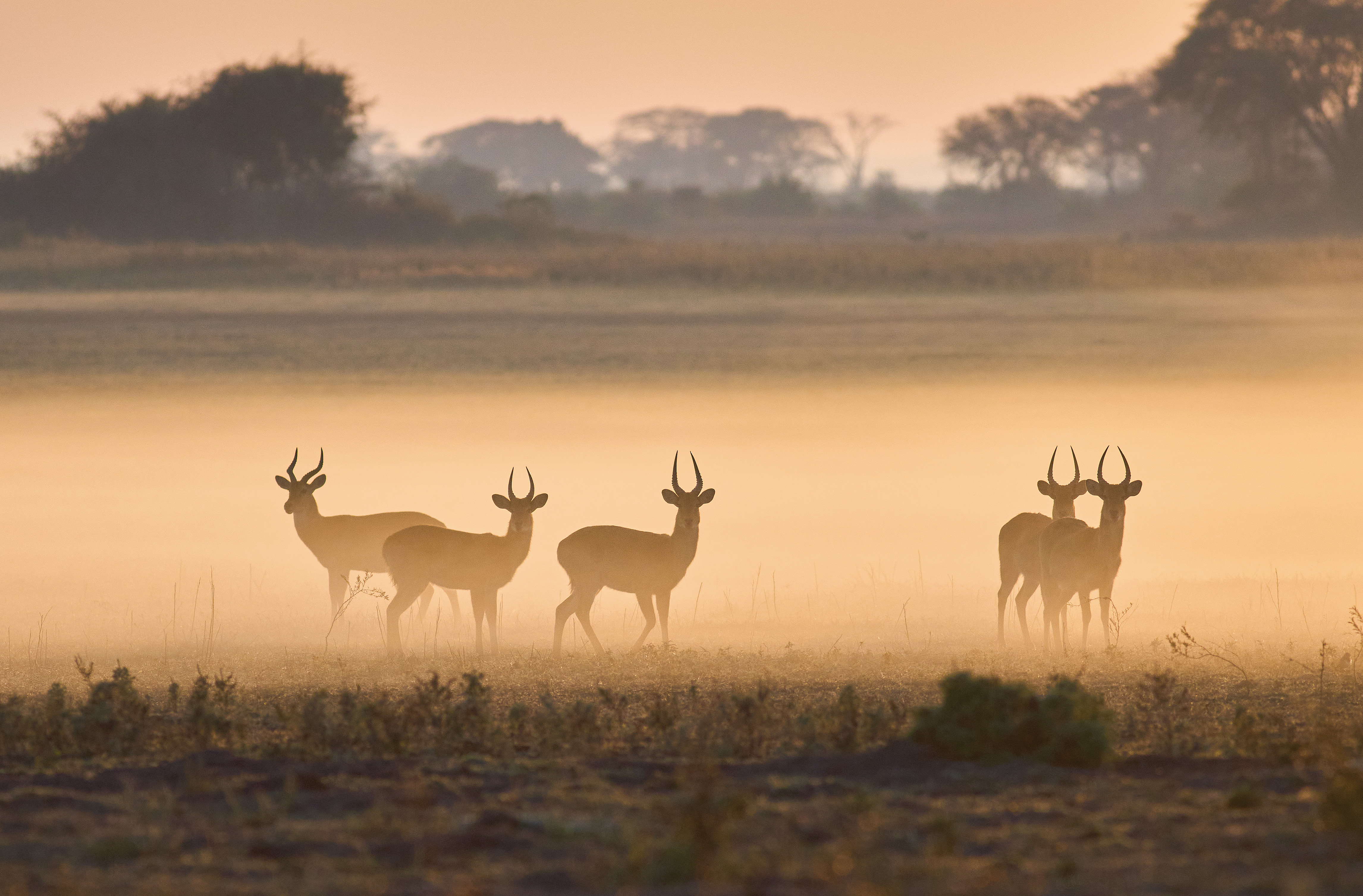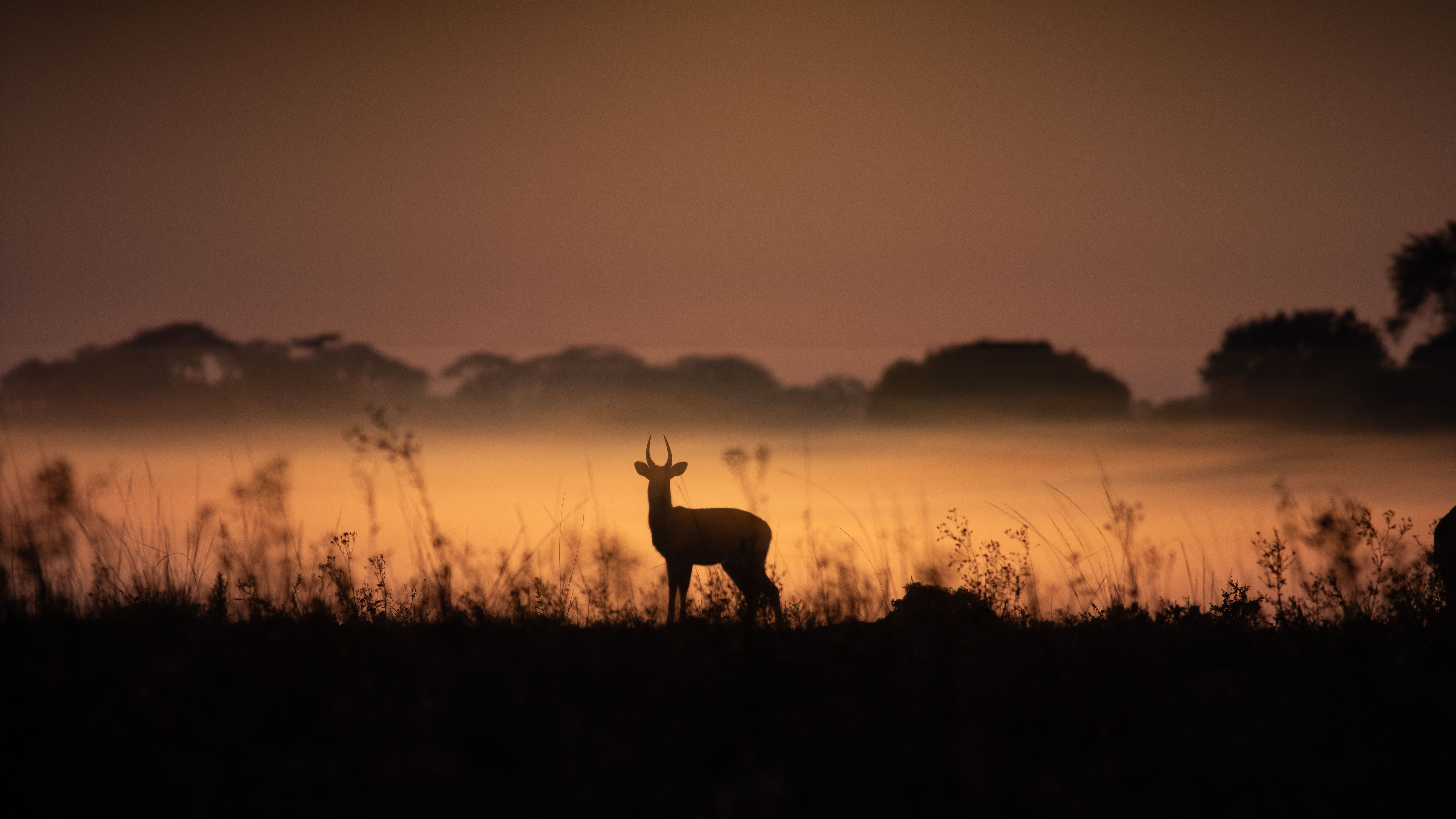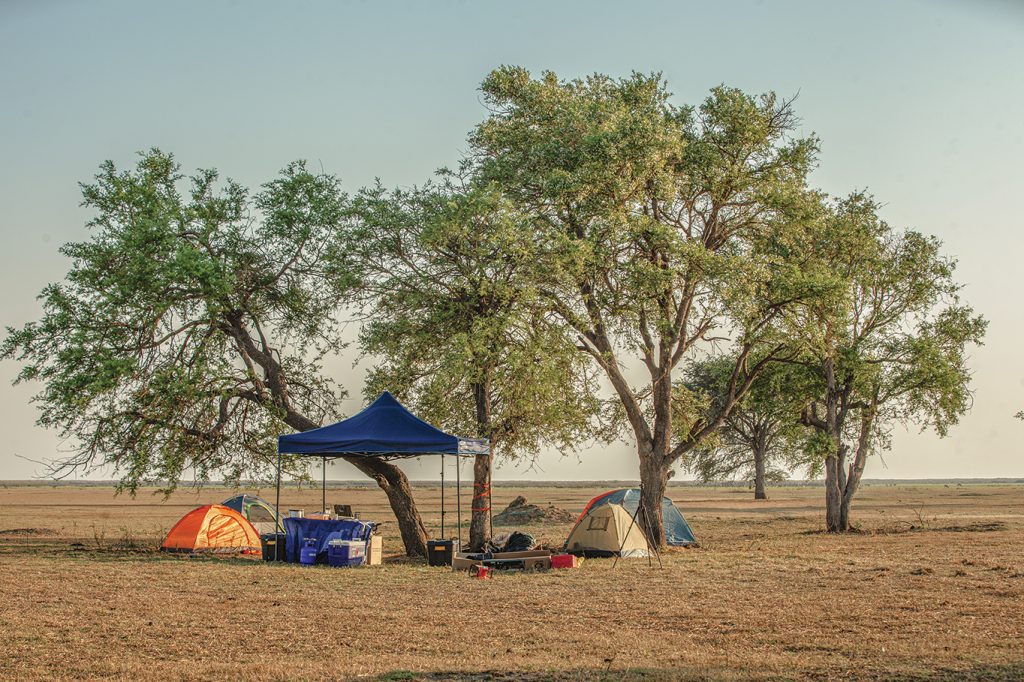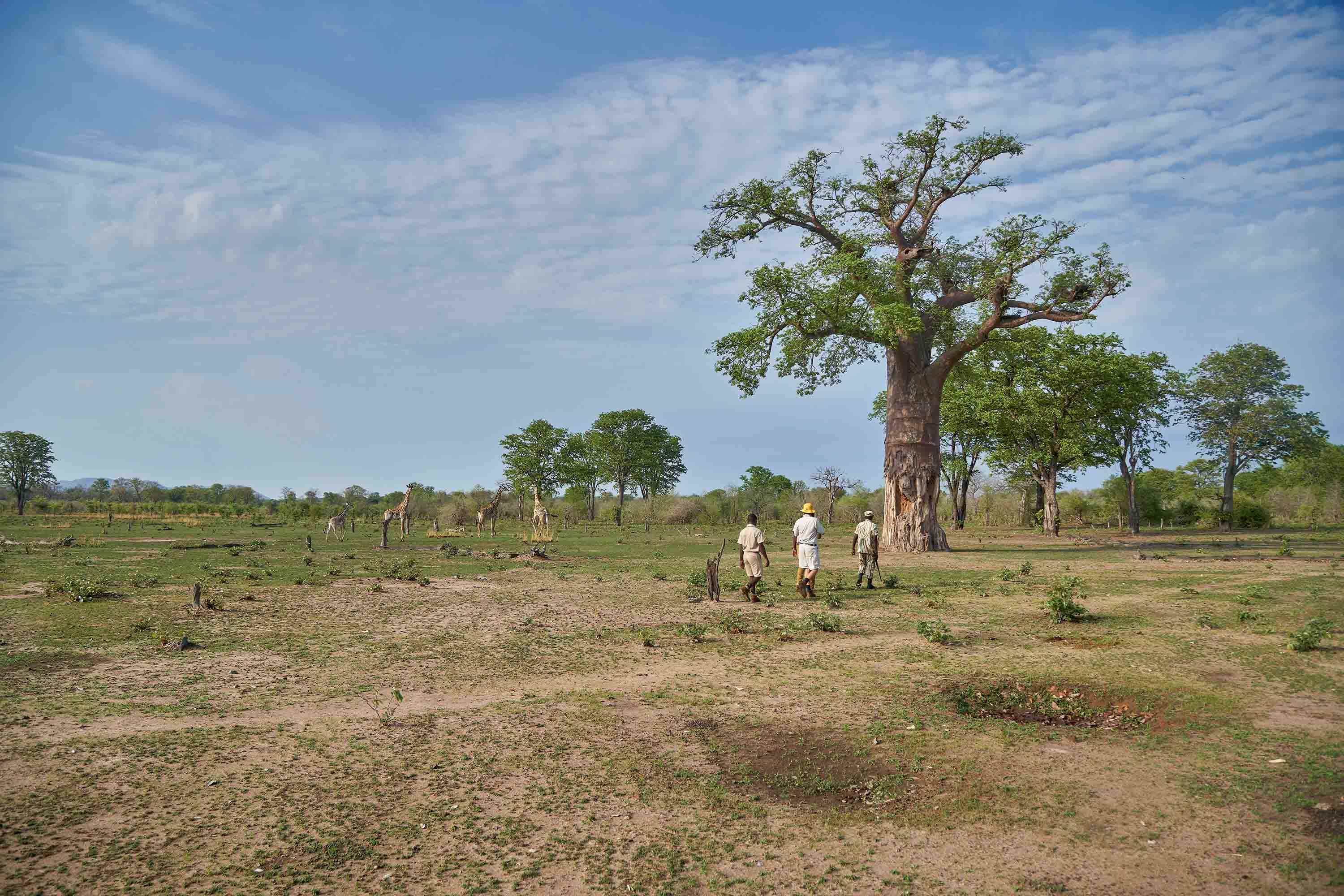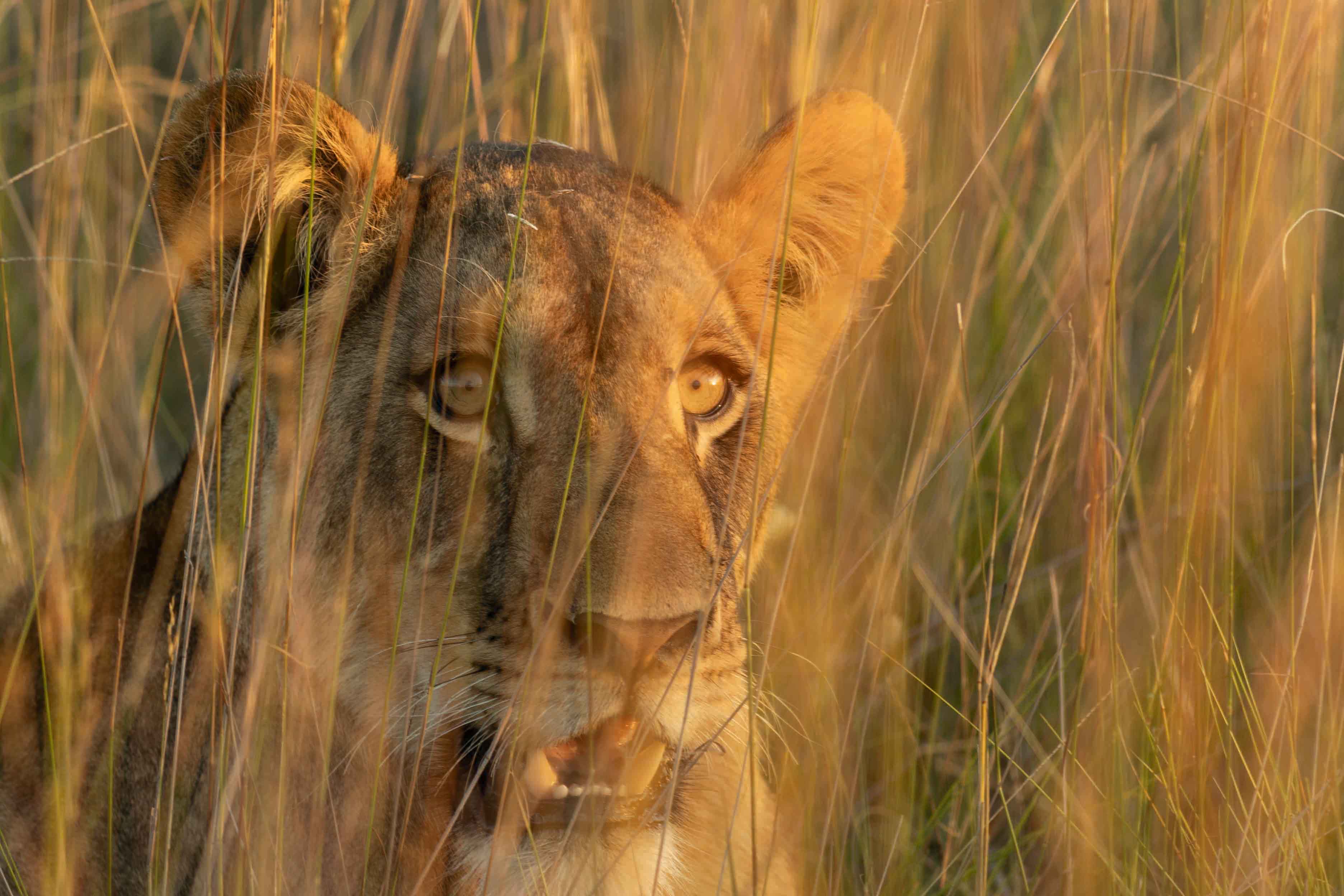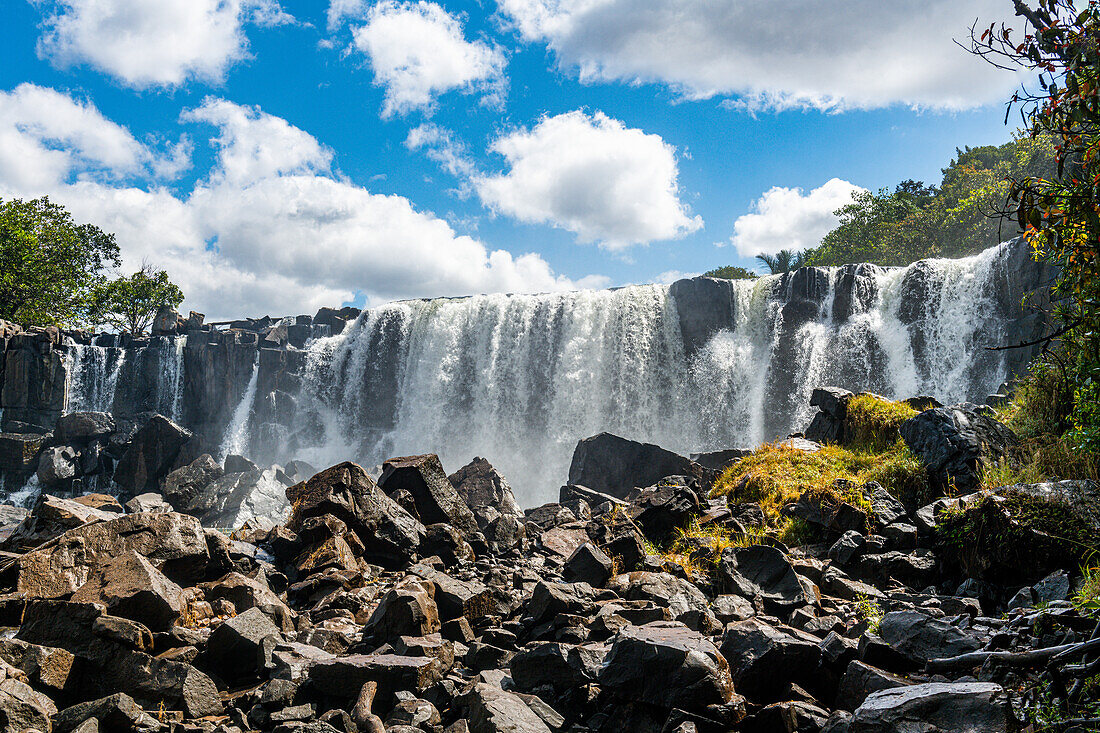What was once known as “The Hell Run” is now an adventurer’s dream road. This guide covers everything for your road trip: when to go, what to pack, and must-see stops like Chishimba Falls. Whether you are camping under the stars or exploring rock art, the Northern Circuit promises unforgettable memories.
Welcome to the Northern Circuit
Once dubbed “the hell run”, a treacherous trail of mud-slicked, narrow, bumpy roads with unclear boundaries, the Great North Road was once impassable; frequented by wildlife and plagued by accidents, only the brave and truck drivers headed to and from the mining centre dared to use it.
But as much as it was a place of tragedy, it was also a place of bravado and defiance. At that time, Zambia was under an economic blockade from Rhodesia, and the hell run was one of the few ways fuel could enter Zambia. Armed with talismans for luck, gin-laced water for hydration, and slogans like “Zambia Forever” painted on the sides of their vehicles, truck drivers ventured down one of the most perilous roads in the world. Today, the blockade is banished to memory and Great North Road has since been tarred over and made safer. But what has not changed is the thrill of adventure and scenic beauties only accessible along the Great North Road.
The Northern Circuit offers incredible variety at each destination dotted along the way. From the history found in the Mwela Rock Paintings, the majesty of Kundalila Falls, to the unreal cerulean blue of Lake Tanganyika, the Northern Circuit is a road trip treasure box waiting to be discovered.

When to Explore the Northern Circuit
For the most enjoyable experience, plan your trip during March and April. With the rains tapering off, you’ll avoid slippery roads while enjoying Zambia’s landscapes at their most lush emerald green. Mark out around 7 to 9 days for a comprehensive experience.
What to Bring on the Northern Circuit
Pack a car toolbox as well as essential spares with you, such as jerry cans, additional fuel and water, as well as a tow rope and a spotlight. Zambia is vast and GPS signals can be unreliable in remote areas, so pack a physical roadmap as backup.
Northern Circuit Pit Stops and How to Get to Them
1. Fig Tree Cafe
Where? A few minutes outside Mkushi, along the road.
Distance: Start in Ndola and stay on the T2 (180km/2.5 to 3 hours).
Driving Tip: Near Mkushi, the road can become rather patchy. Be on the lookout for both potholes and trucks, and drive accordingly.
The first edible oasis on the Great North Road you’ll encounter is The Fig Tree Cafe, located in Mkushi, just a few km south of Kabwe. Known for its hearty homegrown meals and welcoming staff, Fig Tree Cafe is the perfect pit stop to refuel yourself and your vehicle. With vegan, vegetarian, and kid-friendly dishes and the option to place an order on the phone and have your meal awaiting your arrival, it is built for convenience. Fun fact: Fig Tree Cafe is also home to a bookshop and small souvenir market!
Opening Hours: Open Mondays to Saturdays between 6 am and 6 pm. Closed on Sundays.
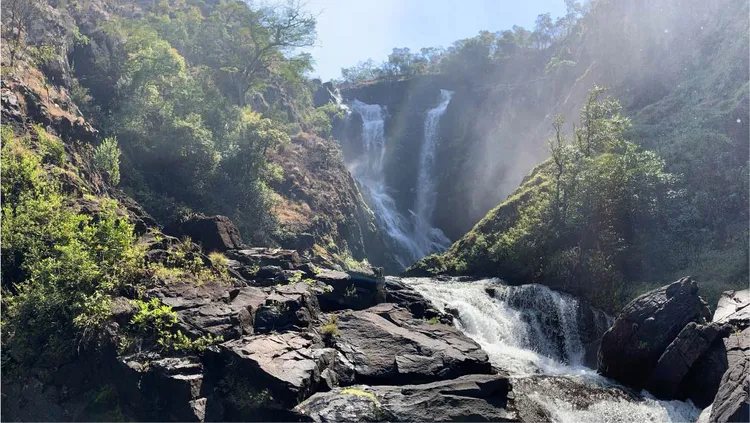
2. Kundalila Falls
Where? After Mkushi, turn off at Serenje and make your way towards the barrage of signs that will lead you to Kundalila Falls.
Distance: Mkushi to Kundalila Falls is approximately 190 km/3.5 hours.
Driving Tip: To reach Kasama, you have to use the road after Serenje, which is not in the best condition; the road is narrow with lots of trucks and is even harder to navigate through the rainy season.
Somewhere east of Great North Road in Central Province lies the first waterfall of the journey, Kundalila Falls. This natural monument features a 70-metre cascade of clear water, plunging into a stunning natural botanical garden. It occurs where the Kaombe River tumbles over the Muchinga Escarpment.
The roar of cascading water and the cool mist in the air create a soothing escape after the heat of the drive. The landscape consists of rocky cliffs, moss-covered stones, and a breathtaking view of the emerald forests stretching across the Muchinga Escarpment—an untouched and uncrowded paradise.
What to do? Kundalila Falls is the perfect retreat for nature lovers and outdoor enthusiasts. It offers a campsite, hiking trails, scenic picnic spots, and the opportunity to swim in deep, clear natural pools.

3. Chishimba Falls
Where? From Serenje, continue north to Mpika and turn onto the M1 towards Kasama. Just outside Kasama, follow the signs to Chishimba Falls.
Distance: Serenje to Chishimba Falls, via Mpika and Kasama (500km/7-8 hours).
Driving Tip: The road is mostly in good condition; just be cautious around blind bends and narrow bridges.
Chishimba Falls is host to a trilogy of waterfalls in succession, the area spanning around 300 metres. Located around 30 km away from Kasama, Mutemena is the uppermost waterfall; Kaela Rapids can be found in the middle, where the Luome River speeds down a short drop of 10 metres, and at the very bottom sits Chishimba Falls, a large drop of around 30 metres. Apart from the charm of the waterfalls, visitors are also treated to the magnificent green of the rainforest and its magical fauna, with different viewing points in the area ensuring perspective-changing angles with each switch.
Visitors should maintain respect in Bemba tradition; the falls are sacred, home to the spirit Chishimba in a nearby cave. It is possible to visit this cave, but refrain from any disrespectful behaviour.
What to do: There are hiking and camping sites, as well as braai and picnic spots available.
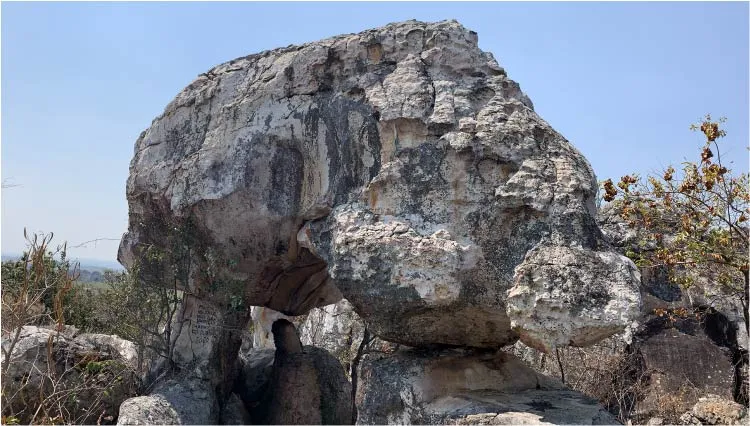
4. Nachikufu Caves
Where? Located in Mpika.
Distance: Chishimba Falls to Nachikufu Caves (25km/30 to 40 minutes).
Commuting Tip: To get to the caves, there is a short driveable dirt road followed by rocky outcrops. The conditions of the gravel road vary, so it is wise to drive slowly. Once on foot, be conscious of where you walk as well as any physical limitations that may make accessing the site harder.
An archaeological treasure, the Nachikufu Caves, located in Mpika, contain a treasure trove of prehistoric art dated to be over 15,000 years old. It is a complex of caves filled with the artistic wonders and livelihoods of people who lived centuries before, Walking amongst the artefacts they valued and made, it is hard not to feel connected to them.
What to do: Other than exploring the caves and taking advantage of the photo opportunity, there are multiple hiking trails and opportunities around the area.
5. Mwela Rock Paintings
Where? Situated on the outskirts of Kasama Town.
Distance: Nachikufu Caves to Mwela Rock Paintings (15 Km/20 Minutes).
Commuting Tips: The road towards it can be tricky if wet. Once there, a bit of rock climbing is required to access the area with the rock paintings, so be conscious and mindful of your physical limitations.
Located about 5km from Kasama Town and considered a national monument, the Mwela Rock Paintings are some of the densest concentrations of rock art on the entire continent. Hosting over 1000 rock paintings from the later Stone Age, the cave is home to images that provide a rare and priceless insight into the lives of the inhabitants at the time.
What to do: Stunning panoramic views and unrivalled photo opportunities await.
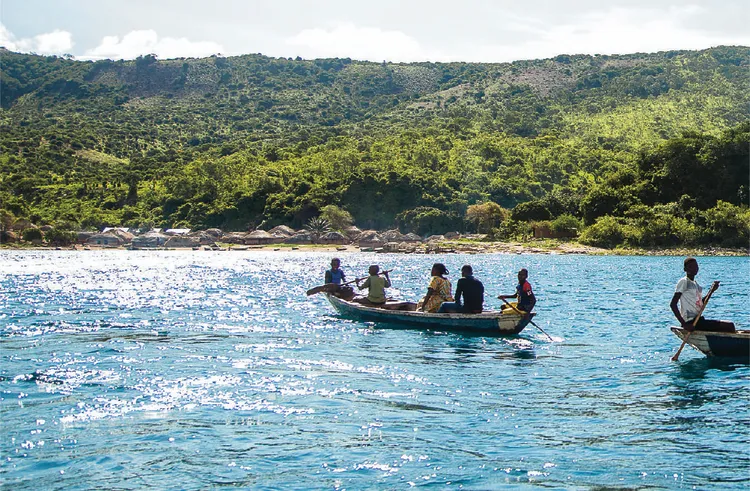
6. Lake Tanganyika
Where? At the northernmost tip of the country, in the western Great Rift Valley.
Distance: Kasama to Mpulungu, via Mbala (210km/4.5 - 5 hours).
Driving Tip: The road from Mbala to Mpulungu is tarred but windy and thin. Practise cautioun.
Spanning an impressive 32,900 km², Lake Tanganyika is the world's longest freshwater lake and the second deepest. Its crystal-clear blue, cerulean waters seem borrowed from an island paradise, a surreal contrast to Zambia’s landlocked terrain. The seemingly endless expanse of water is framed by dramatic hills and mountains, creating a scene that is as breathtaking as it is tranquil.
What To Do: Visitors can dive and snorkel among brightly coloured tropical fish, hike the surrounding hills, or enjoy fishing. Swimmers and divers can experience the lake’s salt-free waters, which shift between perfect stillness and high waves.
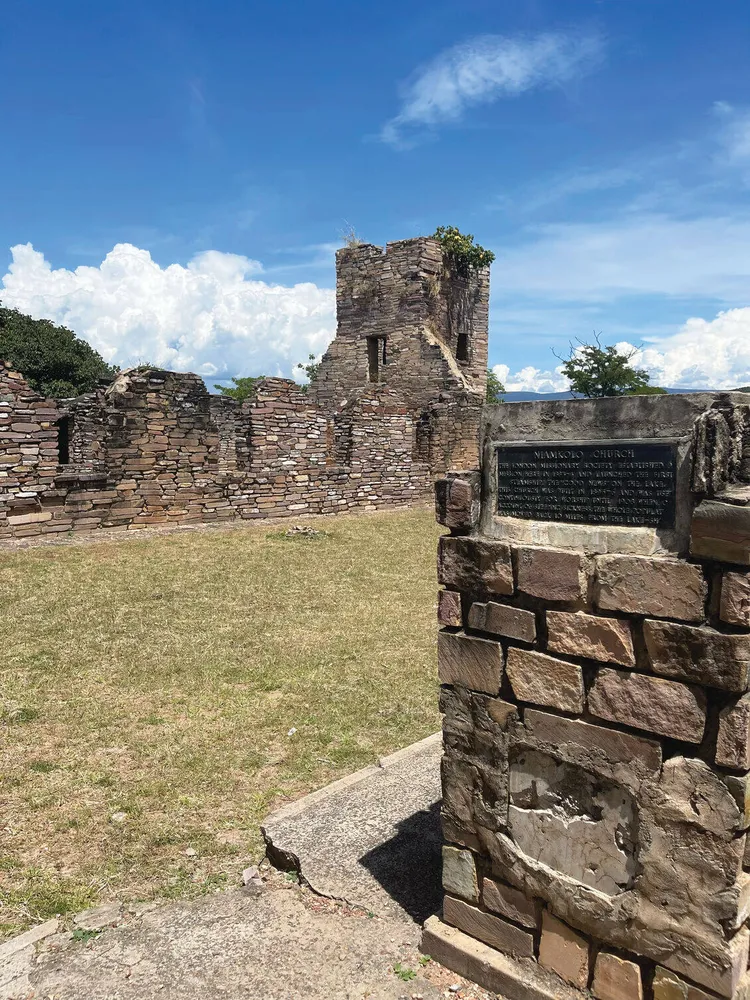
7. Niamkolo Church
Where? Mpulungu Town.
Driving Tip: The roads within the town can be dusty as well as congested.
For a building that stands on the shores of Lake Tanganyika, it is no small feat to command attention beside such a natural marvel. Built from sandstone that glows gold when the light of the sun touches it, Niamkolo manages to do the near impossible.
Established in 1895 by the London Missionary Society, the church holds the honour of being the first church built on Zambian soil. Designed by settler Adam Parv and constructed with the assistance of native Zambians, it was positioned on the Mpulungu shorelines to appear as a welcoming beacon to any voyagers.
What to do: Photography opportunities followed by a short downhill walk to Mpulungu Harbour, which marks the end of the Great North Road.
8. Mpulungu Harbour
Journey’s end is a short trip from Niamkolo in the Mpulungu Harbour. Filled with rich history, it is the oldest port in the country, established by David Livingstone himself, and is still a vibrant and important trading link today.
What to do: There are many accommodation options here, as well as fishing, sailing, eco-tours, and bird-watching activities.
Optional Bonus Stops:
If you are still filled with wanderlust after this stretch of the journey consider the following pit stops.
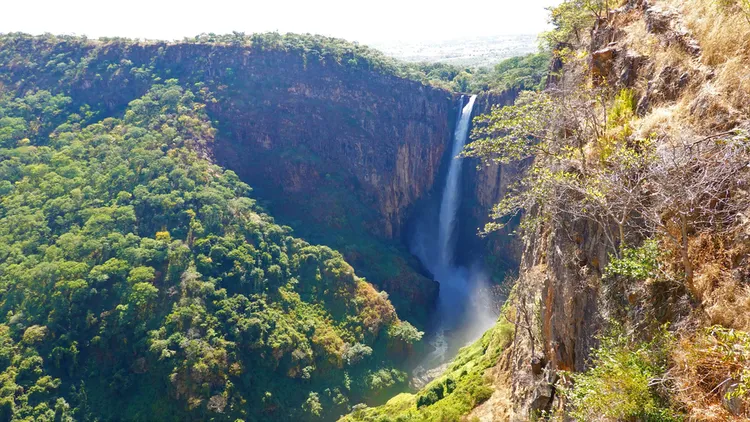
Kalambo Falls
Distance: Mpulungu to Kalambo Falls (40km/1.5 Hours).
Driving Tip: The falls are inaccessible by road. It's best to park your vehicle about 1.5 km away and walk the rest of the way.
The northernmost waterfall on your road trip, as well as the northernmost waterfall in Zambia, Kalambo Falls, is the second-highest waterfall in the whole of Africa. A grand sight, the waters of the falls plunge over 200 feet into an underlying gorge before reaching Lake Tanganyika.The gorge is also home to nesting marabou storks.
Like Victoria Falls, Kalambo is a cross-border waterfall, so visitors are blessed with a view of the scenery as well as a glimpse of Tanzania on the other side of the falls. The area is also an important historical site, as archaeologists discovered signs of the use of fire from over 60 000 years ago, one of the earliest recorded instances of our ancestors using the element.
Nsumbu National Park
Distance: Mpulungu to Nsumbu National Park, via Nsama (160km/5 to 6 hours).
Driving Tip: It’s quite a rough and remote trip. Travel with all the necessary tools and spare equipment and call ahead to park rangers for the best access point on that day.
Located on the shores of Lake Tanganyika, Nsumbu National Park is 2000 km of varied landscape, from sandy beaches to vertical cliffs and valleys where rivers run through. Multiple species of birds and animals call the park home, including impala, crocodiles, hippos and zebras.
What to do: The park has the option of both game drives and walking safaris. It is an incredible place for birdwatching, and there are boat rides available.
Accommodation
Kalambo Falls Lodge
Composed of stone walls and thatched roofs, Kalambo Falls Lodge has an array of chalets and suites available near Mpulungu. Travellers can park their cars in Mpulungu, and the lodge will arrange transport for them across the lake to their rooms upon booking.
Ndole Bay Lodge
Also in Mpulungu, Ndole Bay Lodge has everything from campsites to deluxe chalets. They have a wealth of amenities and activities available on the premises, including a fully stocked bar, a gym and a pool.
As the cellphone signal in the area can be chaotic, it is advisable to contact them via WhatsApp.
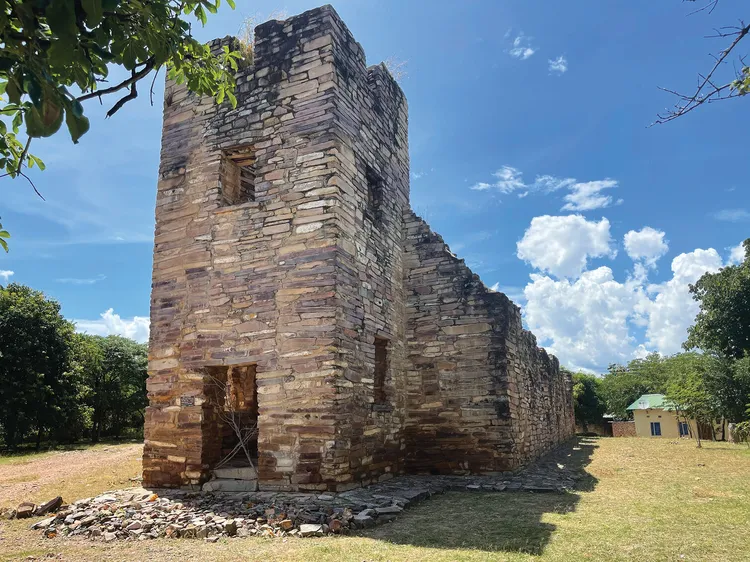
By journey’s end, no matter the fuel burned or hours logged behind the wheel, the rewards of every waterfall, every winding road will far outweigh the effort. Every waterfall and every winding road, every hidden gem along the way will leave you with a tremendous sense of gain, far outweighing what you gave to get there.
